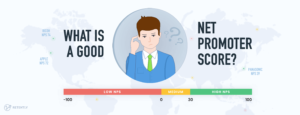What can the CATI survey do for your research? In data collection, Computer Assisted Telephone Interviewing (CATI) is a time-tested method, blending the dependability of phone surveys with smart software to boost reach and efficiency. This article breaks down the workings of CATI, showing you why it might be the solution you’re seeking.
Key Takeaways
- CATI (Computer Assisted Telephone Interviewing) upgrades traditional phone surveys with modern technology, enabling multilingual support, better respondent management, and direct data entry into a structured database.
- CATI surveys improve data collection by offering immediate access to responses, reducing errors, increasing response rates through trained interviewers, and enabling the inclusion of diverse and hard-to-reach audiences.
- To optimize CATI campaigns, craft straightforward questions, effectively manage samples, and ensure quality through real-time monitoring while adapting to respondent preferences and constantly refining the process.
Blending Technology and Telephone Interviews
Computer Assisted Telephone Interviewing, or CATI, modernizes data collection through telephone surveys using advanced survey technology. This approach refines the interview process in several ways:
- Providing support for multiple languages
- Handling instructions for call routing
- Organizing scheduling for interviews
- Allowing direct input of data into an organized database
Defining CATI Survey
Essentially, CATI stands as a research technique that employs specialized software to conduct structured surveys via phone. This software efficiently manages and displays the questionnaire used by an interviewer, making it especially useful for handling lots of structured interviews with pre-coded answers. These responses are ideal for comparative analysis in follow-up surveys.
Therefore, CATI involves interviewers using a computer system to guide them through a survey while on a call with a respondent. Reading once more through the definition, four key elements stand out: the interviewer, the computer system, the survey and the respondent. Let’s explore what they entail.
The Role of Interviewers in CATI
Trained interviewers are instrumental in the CATI process as they:
- maintain and enhance the quality of data
- skillfully manage qualitative responses
- minimize any disruptions during interviews
- provide clear explanations of survey questions to increase response rates
- address challenges faced by respondents
- carry out phone interviews within the structure of the CATI procedure to ensure consistency across interviews.
Interviewers, trained in telephone communication and equipped with an in-depth understanding of the survey script, bring a human touch to the data collection process. On the other end of the line, the responders are the source of the valuable insights that CATI surveys aim to capture. Their experiences, opinions, and feedback are key to market research, driving strategic decisions and fostering a deeper understanding of the subject matter.
CATI’s Technological Edge
The backbone of a CATI system is its software and hardware. Hardware requirements include computers with adequate processing power and memory, headsets for clear audio communication, and a reliable internet connection to ensure seamless data transmission. For the software, specialized CATI applications are designed to optimize the survey process, providing a user-friendly interface for interviewers, streamlined calling systems, and strong capabilities in data management and analysis.
Phone survey software, commonly called CATI software, comes packed with features. These include automatic dialing, call scheduling, and the ability to display the questionnaire on the interviewer’s screen in a structured format for a smooth survey flow. The software also allows for real-time data entry, ensuring that responses are recorded accurately and instantly. Advanced features might include logic checks to prevent data entry errors and the ability to customize surveys based on previous answers or respondent profiles.
Beyond these, CATI systems offer immediate data access and analysis through centralized databases, employ complex algorithms for question sequence management and call direction, and provide compatibility with other survey methodologies, like online surveys, creating a comprehensive and adaptable tool for conducting surveys.
From Paper to Digital: Evolution of CATI Surveys
The journey of telephone surveys began long before the advent of computers when researchers would manually dial numbers and conduct interviews using pen and paper. This method, though effective, was time-consuming and prone to errors in data collection and analysis.
The rise of computer technology and the introduction of CATI systems transformed the process, making it faster, more accurate, and more efficient. These systems enabled interviewers to input responses directly into a computer, reducing the likelihood of errors and speeding up the data collection process.
Over the years, CATI has evolved, incorporating more sophisticated software and technology, further refining the process and expanding its potential. Modern CATI systems can manage complex questionnaires, handle large sample sizes, and provide real-time data analysis. Today, CATI is an indispensable tool in research and market analysis, enabling companies to collect and analyze data swiftly and more reliably than ever before.
Overcoming Barriers to Research
The transition from traditional paper surveys to advanced digital methodologies, such as Computer-Assisted Telephone Interviewing, has greatly improved the quality of survey research. This progress has allowed experts to overcome challenges previously associated with paper-based surveys while refining how information is gathered and analyzed. This transformation brings with it several advantages, including:
- minimized errors in data entry
- accelerated speed in handling and processing survey data
- streamlined efficiency throughout the entire data collection process
- strengthened security measures and privacy for collected information
Moreover, CATI surveys help broaden the reach of market research to include different audiences from various geographic regions. They can also engage with audiences that are difficult to access, including those without internet connectivity or less inclined to participate in online surveys. Such flexibility and the ability of CATI to adjust to multiple research environments help mitigate issues related to logistics, technological accessibility, and digital literacy.
The Anatomy of a Successful CATI Survey
One must thoroughly prepare to launch a successful CATI survey. This process includes defining specific objectives, understanding the target group, and selecting a suitable sample size. Careful consideration of the survey’s timing is crucial, factoring in time zone differences and the availability of potential respondents.
The success of a CATI survey also hinges on ensuring that interviewers receive proper training and that they conduct the survey consistently. Formulating straightforward questions is fundamental to efficiently gathering high-quality data in such surveys. Let’s look into them one by one.
-
Crafting Compelling Questions
Creating engaging questions is an essential component of every CATI survey. It’s important to use clear and simple language, avoiding specialized terminology so participants can easily understand the question. To get specific responses, each question should focus on only one matter at a time, reducing the chance of confusion.
These inquiries need to be coherent, starting with basic topics that are easy and impersonal. As the survey moves forward, it should smoothly shift into questions that delve into more detailed or nuanced topics.
-
Sampling Strategies for CATI
Stratified sampling and the management of quotas are essential components of CATI surveys. They ensure that different respondent segments are adequately represented, thereby improving data accuracy and increasing response rates.
Quotes can be set and adjusted even during an ongoing survey, which ensures that interviews that add value to the statistical sample are collected.
-
Ensuring Quality Control
In CATI surveys, maintaining the integrity of survey data is crucial, with quality control being a top priority. Automated logic checks and real-time monitoring are key features that help ensure data quality. By standardizing settings across devices and optimizing keyboard inputs for managing interviews and calls, these systems boost interviewer efficiency and improve the accuracy of the data collected.
Navigating CATI Software: Features That Matter
As mentioned, CATI software is packed with various features for streamlined call handling, real-time data gathering, and analysis. Additionally, its automated sample management workflows significantly boost operational efficiency and data quality. Let’s briefly dwell on the main three:
-
Advanced Call Management
CATI software boosts calling efficiency with features like predictive dialing, callback management, and integrated telephony. These advanced call management tools help manage samples efficiently, proactively initiate calls, and quickly connect respondents with the next available interviewer, greatly increasing productivity.
-
Real-Time Data Capture and Analysis
CATI surveys enable real-time data capture and analysis, thanks to CATI software, which allows for the immediate recording of collected data into the system. This feature streamlines the interview process, as responses are directly entered into a database, speeding up data entry and minimizing delays between collecting and logging responses.
-
Sample Management and Workflow Automation
CATI software effectively manages samples, ensuring that every record matches a distinct participant. The system’s efficiency is improved with built-in features like intelligent time zone adjustments and quota enforcement based on the collected data.
Structured workflows in the sample management process streamline interactions with respondents, pausing outreach when necessary and optimizing resource use. This process is seamlessly tracked using comprehensive dashboards for real-time monitoring.
The Impact of CATI on Market Research
Market research benefits significantly from CATI surveys – a cost-effective method of collecting valuable data. This approach offers the flexibility to tailor the survey process and can handle any number of respondents. It saves time and enables the immediate electronic recording of participant responses.
CATI surveys are essential in global market research for their ability to deliver precise and comprehensive results. This method is particularly valuable in understanding consumer behaviors, preferences, trends, and potential market opportunities, providing key insights for decision-making. It allows businesses to tap directly into their audience’s perceptions, making it an invaluable tool for crafting strategies that are both responsive and informed.
1. Tailored Surveys for Targeted Insights
CATI systems enable the personalization of surveys, allowing for adjustments during each interview based on participant responses, ensuring a tailored and in-depth approach. The immediate nature of the feedback allows researchers to gauge respondents’ sentiments quickly, adjust survey strategies if needed, and address any emerging issues or trends in real time.
Sophisticated screening functions guarantee that only individuals matching specific demographic criteria participate. Furthermore, direct interactions through CATI add a personal touch, greatly improving the quality and depth of the data collected. As a result, CATI often achieves high response rates, as personal interaction encourages participation.
2. Speed and Agility in Consumer Feedback
CATI surveys provide a swift and efficient way to gather consumer feedback, with quick data collection cycles, instant information recording, and fast response gathering. These surveys stand out in their ability to rapidly compile data thanks to streamlined processes and the immediate capture of participant reactions.
For example, CATI’s automation features, such as automated dialing and structured survey paths, streamline the data collection process, making it faster and more efficient. Automated dialing reduces the time spent between calls, while real-time data entry eliminates the need for post-survey data transcription, thereby speeding up the overall process. This way, interviewers can conduct more surveys in less time, and the data is available almost immediately for analysis, speeding up the decision-making process.
The blend of human interviewers and cutting-edge technology allows for real-time feedback during surveys and quick adjustments when needed, making this a highly flexible approach to market research.
3. Quality and Accuracy of Data
The use of computer software minimizes human error in data recording and entry, ensuring that the information collected is precise and reliable. Additionally, the structured format of CATI surveys helps maintain consistency across different interviews. Real-time data capture allows for immediate verification and clarification of responses, further improving data integrity.
4. Cost Efficiency and Scalability
Compared to face-to-face surveys, CATI surveys offer a more economical alternative as they eliminate substantial travel and logistical costs by being carried out remotely. They are versatile in terms of scalability, allowing both small and large businesses to adjust the infrastructure according to their sample size needs without bearing unnecessary extra expenses.
Comparing CATI with Other Survey Methods
In survey administration, CATI (Computer-Assisted Telephone Interviewing), CAPI (Computer-Assisted Personal Interviewing), and CAWI (Computer-Assisted Web Interviewing) offer distinct characteristics that serve different research requirements. Deciding which method to employ hinges on several factors, such as the surveyed demographic, specifics of the questionnaire, financial constraints, and deadlines associated with the project.
CATI vs. Online Surveys (CAWI)
Combining the direct human engagement of CATI surveys, which can lead to more honest responses, with the cost-efficiency and ease provided by CAWI by eliminating calling costs, in a mixed-mode survey strategy could optimize the benefits of both methodologies.
CATI vs. Face-to-Face Surveys (CAPI)
CATI surveys have several advantages over face-to-face interviews, including cost savings due to the lack of need for physical travel and the ability to conduct them from multiple locations. These surveys allow for quicker data collection and processing and can reach a wider and more diverse participant pool. Additionally, they offer greater respondent anonymity, leading to more honest responses that better reflect their true thoughts or experiences.
Nevertheless, it’s important to acknowledge that noteworthy data discrepancies were observed when assessing specific health indicators through CATI compared to CAPI methods. This suggests that for some types of data, there is an equivalent level of dependability between these two survey methodologies.
Optimizing Your CATI Campaign
To ensure that your CATI campaign thrives, focus on key factors: equip your interviewers with essential tools and training, customize your approach to meet respondent needs, consistently monitor your campaign’s progress, and make timely tweaks as needed. Let’s go into more detail.
1. Training and Equipping Interviewers
To ace your survey, make sure CATI interviewers receive in-depth training, especially in virtual settings. Providing a comprehensive CATI starter kit and guaranteeing they have the right tech tools are crucial steps. This preparation not only enhances the quality of their conversations but also speeds up the data entry process.
While CATI allows for a degree of personal interaction, maintaining a genuinely personal touch can be challenging, especially compared to face-to-face interviews. The absence of visual cues and the structured nature of CATI surveys can sometimes make the interaction feel impersonal. Training interviewers to engage effectively and empathetically with respondents can help foster a connection and improve the quality of the data collected.
2. Adapting to Respondent Preferences
Reaching respondents and securing their cooperation can be challenging in telephone surveys. People may be reluctant to engage in phone surveys due to privacy concerns or simply due to the inconvenience of taking a call. Moreover, the increasing use of caller ID and anti-telemarketing measures can make it difficult for interviewers to connect with potential respondents.
Techniques like scheduling calls at hours when potential respondents are most likely to answer and engage and ensuring the anonymity and confidentiality of responses can help improve response rates.
Ensuring that CATI surveys are not perceived as annoying or intrusive also involves adjusting the frequency of calls. It is important to strike a balance in how often contacts are made while also providing options for callbacks that respect the convenience of those surveyed.
3. Monitoring and Improving
Running an effective CATI campaign hinges on ongoing monitoring and fine-tuning. Keeping an eye on how things are progressing helps you spot what’s working and what’s not, whether that’s refining your survey questions, giving your interviewers a bit more coaching, or picking the best times to call. These adjustments help the campaign adapt and improve, ensuring you gather top-notch, dependable data.
4. Mitigating Data Loss
CATI systems rely heavily on stable internet connections for data transmission and storage. Connectivity issues can disrupt interviews and lead to data loss or delays. Ensuring reliable internet access and having backup systems in place are essential to mitigate these risks.
Trends in CATI Surveys
Looking ahead, CATI surveys might face a few challenges as communication keeps changing. More and more people are leaning towards texting or going online instead of picking up phone calls. So, what’s next for CATI? It’s all about teaming up with online surveys. Imagine blending CATI’s personal touch with the wide reach and cost-saving perks of online surveys. This kind of team-up could broaden who we reach and how inclusive our data collection is, capturing insights from groups that might be difficult to connect with through just one method alone.
As technology advances, we can expect CATI to get even better at what it does. Imagine CATI systems picking up on how someone’s voice changes or how they really feel about a question, offering deeper insights into responses beyond the content alone. Plus, with predictive analytics and machine learning in the mix, CATI will figure out the best times to make calls and get more people engaged. At the same time, more advanced data analysis would mean getting deeper, on-the-spot insights and making smart decisions faster.
Addressing the growing concerns about privacy and data security is also important to maintain trust and response rates in CATI surveys. Developing more robust protocols and systems will likely increase the reliability of CATI methodologies.
Summary
CATI merges traditional interviewing methods with cutting-edge tech, creating a powerful tool for collecting data. It’s a go-to for researchers and businesses keen on diving deep into consumer preferences, trends, and behaviors.
CATI surveys blend four key ingredients: specialized computer software, a well-crafted survey, skilled interviewers, and, of course, the participants. The software streamlines the process, automating calls and capturing data in real time, while the script ensures consistency and depth in the collected data. Interviewers engage with participants, guiding them through the survey questions to capture insightful responses. Participants, at the core of the survey, provide the critical data that fuels market research insights. Together, they boost both efficiency and data quality, highlighting the effectiveness of CATI surveys in gathering market insights.
Reach out to a broader audience, gain a deeper understanding through personalized interactions, and enhance your data quality with real-time feedback. Don’t miss out on valuable customer insights that can drive your business forward. Start exploring CATI as an add-on to your existing CX survey toolkit and transform your approach to customer feedback.

















 Christina Sol
Christina Sol 






 Greg Raileanu
Greg Raileanu 